It is a peaceful autumn day here in Hokkaido; a Black-eared Kite banking, wheeling and gliding effortlessly on outspread wings just outside my workroom window tempts me out for a walk in Nopporo Forest near where I live. There, I stroll among trees that now seem somewhat threadbare; the extreme density of summer foliage has begun to thin. The trail seems to pull at my feet, drawing me onward and reeling me in like a spider would its prey into a web.
I reach the pond, and through the shadowing fringe of waterlogged willow saplings I admire an undulating golden sheen reflecting across the water. An immature Little Grebe, even now so young as to have a striped head and to be begging its parents for food, despite it being early October, ploughs fine ripples across the shimmering gold-green-red mirror of the water. A quintet of Mandarin Ducks, three gaudily plumed males and two elegant and subtly-hued females, swim across their bright reflections, ignoring the competing brilliance of their mirrored counterparts. The air is calm without a breath of wind; late afternoon light gleams brightly as it slants in beneath darkening gray cloud. The pleasantly cool air carries that delightful autumnal scent containing a hint of mown grass, a touch of mushroom, a pinch of drying herbs and the lush loamy smell of rich forest soil after soft rain.
Earlier this morning, heavy rain soaked the ground and the yellowing leaves of the forest. A sodden leaf falls with a dull damp rustle; a branch snaps and falls under the weight of its load of wet moss and fungi. Soon the leaves will be gone and it will be the sound of snow bringing down tree branches and limbs that I will hear.
But today, with the sun out and warm, autumn crickets begin their dry stridulating from grassland areas and dozens of dragonflies swarm around the woodland edge, their wings rustling just like autumn leaves. Not far to the north on the Ishikari Plain, the arrival from northeastern Russia of many thousands of Greater White-fronted and Bean geese as they break their journey to overwintering sites in Honshu is a reminder that winter looms once more and the season of insects is drawing to a close.
Mammals, birds and amphibians have an indiscrete tendency to announce their presence almost wherever they go, whether it is our summer songbirds, the whistling rutting stag Sika Deer, the barking Red Fox in winter, the clamoring geese on migration or the multitudes of croaking frogs. They don't request, they demand our attention. It is hardly surprising then that we tend to overlook other, smaller and less voluble, life forms. The myriad beetles, bugs and spiders that wander our woods and forests are almost entirely quiet, earthworms are mute, swarms of dragonflies at best rustle, while our beautiful butterflies are completely silent, or are they?
Toward the end of August, I walked a favorite trail on the lower flanks of Mount Harukayama, not far from Otaru in western Hokkaido. Although ostensibly I was in search of birds, it was a hot, humid day and a little too late, both in the season and in the day, to hear many songsters. Nevertheless, a Narcissus Flycatcher still obliged and there were other natural sounds to listen to. As I walked, I became subtly aware of a puzzling noise. It had penetrated my subconscious and lingered there as "the sound of lightly falling rain." With other distractions occupying my thoughts, it was a while before the complete visual absence of falling rain finally clashed with the sound and a memory from many years ago was eventually dredged up from my mind. I had indeed heard that particular sound just once before, in an old oak woodland on the east shore of Loch Lomond, Scotland, in the spring of 1979 or 1980. Then, and now, it was a dry, gentle pattering sound, not the heavy splish-sploshing kind, as if of fine rain. Searching around I noticed how a number of trees above me seemed very sparsely leafed for the time of year. That sight triggered further thoughts and I quickly checked the leaves of shrubs and herbs and the surface of the trail beneath those trees until I finally deduced the cause.
The light rainlike pattering was actually the sound of caterpillars! Well, not a sound they were producing directly, but one indirectly caused by the "rain" of frass falling from the tree canopy where they were feeding. Frass, is the polite, entomological term for the fine, dry waste material produced by phytophagous caterpillars as they munch away at leaves. In other words it's a kind way of saying its "raining insect poop."
Perhaps you have occasionally seen leaves with odd snaking squiggles seemingly burrowed through them; these are the tracks of leaf-mining insects, which are also phytophagous. Other types of phytophages roll, or even fold, over leaves, binding them together with silk before eating them. Some species eat only the parts between the leaf veins, reducing the leaves to a fine skeleton; some feed on just one surface of the leaf, while still more consume the whole thing. The latter is what I witnessed on Harukayama and many years earlier beside Loch Lomond. The caterpillars that do this may be those of a wide range of moths or butterflies (if you have ever grown cabbages, you may be personally familiar with the impact of white butterfly caterpillars), some of which are very specific to certain species of trees or shrubs. As springs come earlier and summers become warmer and longer, these insects are more likely to produce more than one generation a year, and it is in the later generations that we see massive population growth and hence more noticeable damage. Usually it is temporary and part of the natural cycle of the forest, though in certain circumstances those populations can increase to pest proportions.
While dry frass may fall from the canopy, making a subtle sound, the damp autumnal earth below is perfect for a different kind of invertebrate — the earthworm, nature's plough. As Charles Darwin so famously wrote of them in 1881: ". . . it may be doubted if there are any other animals which have played such an important part in the history of the world as these lowly organized creatures." And, "Without the work of this humble creature, who knows nothing of the benefits he confers upon mankind, agriculture, as we know it, would be very difficult, if not wholly impossible."
There are those who claim to be able to hear the sound of burrowing earthworms, though for me they are silent.
Earthworms have fine bristles known as chaetae on each of their body segments and it is the friction between these and the ground that allows them to "worm" and burrow along so easily. Australia claims the record for giant earthworms with a four-meter-long specimen. More than one-metre-long worms have been reported from Japan, though I thought I was doing well to find one just longer than my foot this summer. Recently in Brazil, however, I came across a snake-sized one, easily more than a metre long. Was it my imagination, or did its chaetae make a fine rasping on the wet mud?
Listen out for the changing sounds of the seasons.
Mark Brazil, naturalist and author, has written Wild Watch since April 1982; he currently leads wildlife excursions around Japan by land and sea, and worldwide. Mark's latest book, "Field Guide to the Birds of East Asia," published by A & C Black, describes, illustrates and maps all of the birds of Japan (as well as Taiwan and Korea and adjacent regions of eastern China and northeastern Russia). Mark's earlier "A Birdwatcher's Guide to Japan" is also available. If you would like to obtain copies please contact him at: [email protected] or via his website www.wildwatchjapan.com



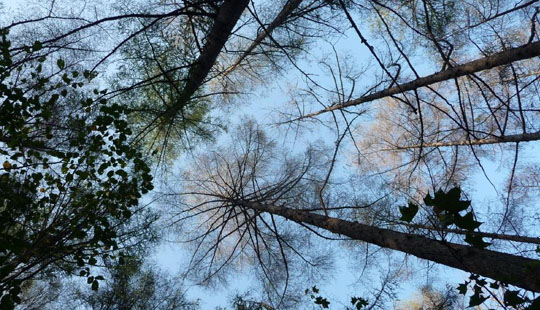
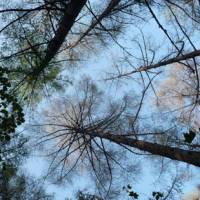
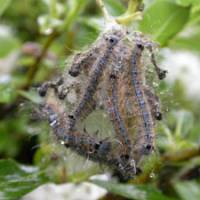
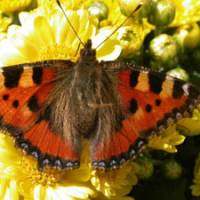
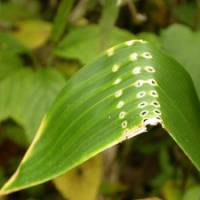
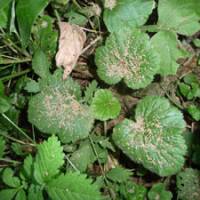
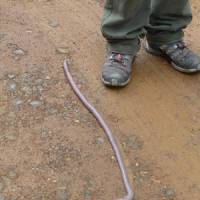















With your current subscription plan you can comment on stories. However, before writing your first comment, please create a display name in the Profile section of your subscriber account page.